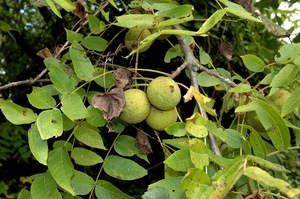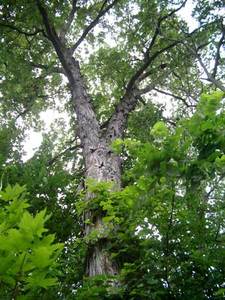Permaculture companion plants for Sugar maple
| Image | Name | Data | Description | Actions |
|---|---|---|---|---|

|
Black walnut |
4-9
Perennial
Full sun
Moist
Light (sandy), Medium, Heavy (clay)
30.0
Tall trees
Crafting, Compost, Dye, Filter, Herbicide, Pest control, oil, Tannin, Lumber, Dynamic accumulator, Fragrance
true
Sap, Seed
https://en.wikipedia.org/wiki/Juglans_nigra
Fast
Juglandaceae
Schwarznuss
True
Oil, Sweetener
https://pfaf.org/User/Plant.aspx?LatinName=Juglans nigra
Alabama, Arkansas, Connecticut, Delaware, District of Columbia, Florida, Georgia, Illinois, Indiana, Iowa, Kansas, Kentucky, Louisiana, Maryland, Massachusetts, Michigan, Minnesota, Mississippi, Missouri, Nebraska, New Jersey, New York, North Carolina, Ohio, Oklahoma, Ontario, Pennsylvania, Rhode I., South Carolina, South Dakota, Tennessee, Texas, Virginia, West Virginia, Wisconsin
Austria, Belgium, Bulgaria, Czechoslovakia, Denmark, Germany, Hungary, Italy, New Mexico, North Caucasus, Poland, Romania, Tadzhikistan, Transcaucasus, Vermont, West Himalaya
https://powo.science.kew.org/taxon/urn:lsid:ipni.org:names:279034-2
|
Black walnut is a large deciduous tree native to North America, growing up to 100 feet tall. It has a straight trunk with a rough, deeply furrowed bark, and a canopy of large, pinnately compound leaves with 15-23 lance-shaped leaflets. The tree produces large, greenish-white flowers in the spring, followed by large, spherical fruits containing a single, edible nut. Black walnuts are prized for their distinctive, rich flavor and are commonly used in baking and cooking. The nuts can be harvested in the fall and can be stored in their shells for several months. Black walnuts prefer deep, well-drained soils and can tolerate a wide range of soil pH levels. They can be grown successfully in full sun to partial shade, and they are relatively drought-tolerant once established. Black walnuts are not particularly winter hardy, and they can be damaged by heavy ice and snow. In addition to their culinary uses, black walnuts have a number of other uses. The wood is highly prized for its durability and attractive grain, and is used in furniture making and other woodworking applications. The tree's leaves, bark, and nuts are also used in herbal medicine for their astringent and tonic properties. Black walnuts are also valued for their ability to improve soil health, as their deep taproots help to break up compacted soils and their fallen leaves add organic matter to the soil. Black walnuts are also an important food source for wildlife, including squirrels, birds, and deer. The tree provides shelter and nesting sites for a variety of animals, and its fallen leaves and nuts provide food for many species. |
Show
Edit |

|
Shagbark hickory |
4-8
Perennial
Full sun
Dry, Moist
Light (sandy), Medium, Heavy (clay)
Deciduous
30.0
Tall trees
Dye, Fire starter, Lumber, Dynamic accumulator, Fragrance
true
Sap, Seed, Milk
https://en.wikipedia.org/wiki/Carya_ovata
Slow
Juglandaceae
Schuppenrinden-hickory
Hardwood forest
https://pfaf.org/User/Plant.aspx?LatinName=Carya ovata
3° C (37° F)
90-120 days
Eastern North America, Alabama, Arkansas, Connecticut, Delaware, District of Columbia, Georgia, Illinois, Indiana, Iowa, Kansas, Kentucky, Louisiana, Maine, Maryland, Massachusetts, Mexico Central, Mexico Gulf, Mexico Northeast, Mexico Southwest, Michigan, Minnesota, Mississippi, Missouri, Nebraska, New Hampshire, New Jersey, New York, North Carolina, Ohio, Oklahoma, Ontario, Pennsylvania, Québec, Rhode I., South Carolina, Tennessee, Texas, Vermont, Virginia, West Virginia, Wisconsin
Tap
North Caucasus, Poland, Romania, Transcaucasus
https://powo.science.kew.org/taxon/urn:lsid:ipni.org:names:30122806-2
|
The Shagbark hickory (Carya ovata) is a tree native to the eastern United States and southeastern Canada. It is easily recognizable by its shaggy bark, which peels away from the trunk in long, thin strips. The tree grows to a height of 70-100 feet and has a spread of 30-50 feet. Its leaves are alternate and pinnately compound, with 5-7 leaflets per leaf. In the spring, it produces male flowers in drooping clusters and female flowers on short spikes. In the fall, the tree bears edible nuts that are encased in a thick, hard shell. Shagbark hickory grows best in deep, well-drained soil in full sun to partial shade. It is a slow-growing tree and can take several decades to reach its full size. It is winter hardy and can tolerate cold temperatures. The edible nuts of the Shagbark hickory can be harvested in the fall. They can be eaten fresh or roasted, and can also be ground into a flour. The nuts can be stored in a cool, dry place for several months. Shagbark hickory has a number of uses. Its wood is strong and dense, and is prized for use in making furniture, flooring, and other products. The nuts are an important food source for many animals, including squirrels and birds. The tree's bark and leaves have been used medicinally by Native Americans to treat a variety of ailments. ### Links [US Forest Service - Shagbark Hickory](https://www.srs.fs.usda.gov/pubs/misc/ag_654/volume_2/carya/ovata.htm) |
Show
Edit |